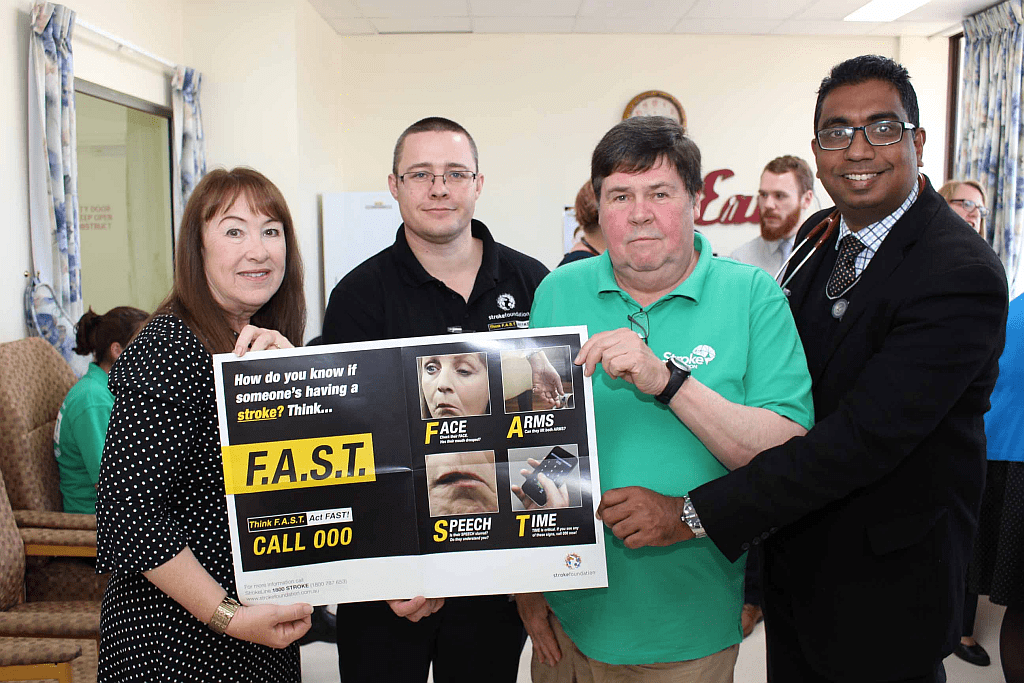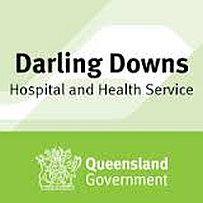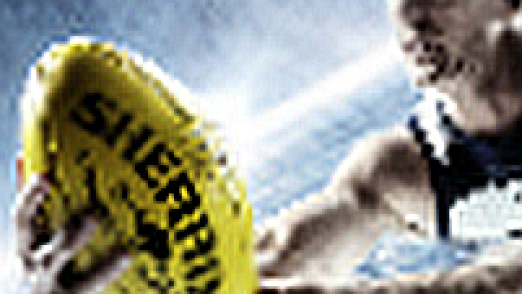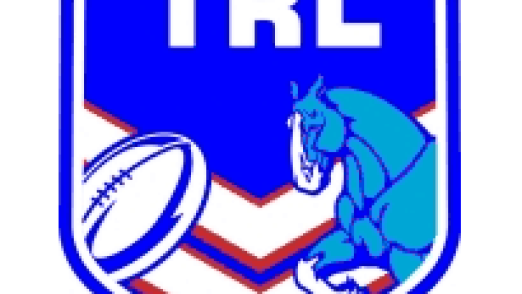To commemorate National Stroke Week the Toowoomba Hospital’s Geriatric, Adult Rehabilitation and Stroke Service (GARRS) is reminding residents about the importance of seeking immediate medical help at the first sign of stroke.
“With Stroke Week on from 4 to 10 September we want people to think F.A.S.T. and act fast,†said GARSS Director Dr Nisal Gange. “F.A.S.T. stands for face, arms, speech, and time, and these are the things you need to check if you think someone is having a stroke.

“Check their face to see if their mouth has dropped; check to see if they can lift their arms; check if their speech is slurred, or if they can understand what you’re saying; and be conscious of time, because time is critical, so if you see any of these signs call triple-zero immediately.â€Â
Stroke Foundation Queensland community engagement coordinator Kathy Pataczek said the launch event at Toowoomba Hospital on Monday was one of hundreds happening around the country during Stroke Week.
“Stroke Week is all about raising awareness of stroke, knowing the contributing factors and ways to avoid stroke, and most importantly recognising when someone is having a stroke,†Ms Pataczek said. “Time is such a critical factor in the successful treatment of stroke and that’s why we’re placing as much emphasis as we can on the F.A.S.T. message this week and throughout the year.â€Â
Dr Gange said the Toowoomba Hospital Stroke Service had become the primary facility for treatment of stroke in the Darling Downs Hospital and Health Service area. “Since our Stroke Service began in 2013 we have seen more than 800 patients,†he said .“At the time the service was established we had tremendous support from Dr Peter Gillies, who was Executive Director of Toowoomba Hospital at the time, and Dr Gillies has continued to support what we do since becoming DDHHS Chief Executive.
“Around ten per cent of the patients we have seen have been eligible for stroke lysis treatment, which involves giving a clot-busting injection, and where we have been able to give that injection within four-and-a-half hours of having the stroke we have seen a lot of excellent results. We are also now working in conjunction with the Princess Alexandra (PA) Hospital performing clot retrieval which is a new treatment option”.
“In cases where the clot is more than five millimetres in length, and it is in a part of the brain that is accessible, we give the clot busting lysis injection here at Toowoomba Hospital, then transport the patient to the PA where the team there will use a catheter to go in and remove the clot. That service has been in place for a couple of months and is not for everyone, but for those patients who are eligible it is an extra level of treatment and so far we are seeing very good results.â€Â
Use the following FAST guide if stroke is suspected:
• F for face – check the person’s face and see if their mouth has dropped
• A for arms – see if they can lift both arms
• S for speech †see if their speech is slurred or impaired and check if they can understand what you are saying
• T for time †time is critical so if you see any of these symptoms call Triple-0
Additional information:
• The Toowoomba Hospital Stroke Unit started on 11 February 2013.
• Toowoomba Hospital is the only facility in the Darling Downs Hospital and Health Service that offers the stroke lysis program and the service is available 24-hours a day, seven days a week.
• Stroke lysis treatment is only suitable for certain types of strokes, but when used appropriately within four and-a-half hours of the first symptoms of stroke, it can deliver excellent results.
• At Toowoomba Hospital stroke lysis treatment is administered to around 10 per cent of stroke patients, compared to the state average of eight per cent and the national average of seven per cent.
• The Toowoomba Hospital Stroke Unit operates in conjunction with the hospital’s Geriatric, Adult Rehabilitation and Stroke Service (GARSS).
Darling Downs Hospital and Health Service Media Team


